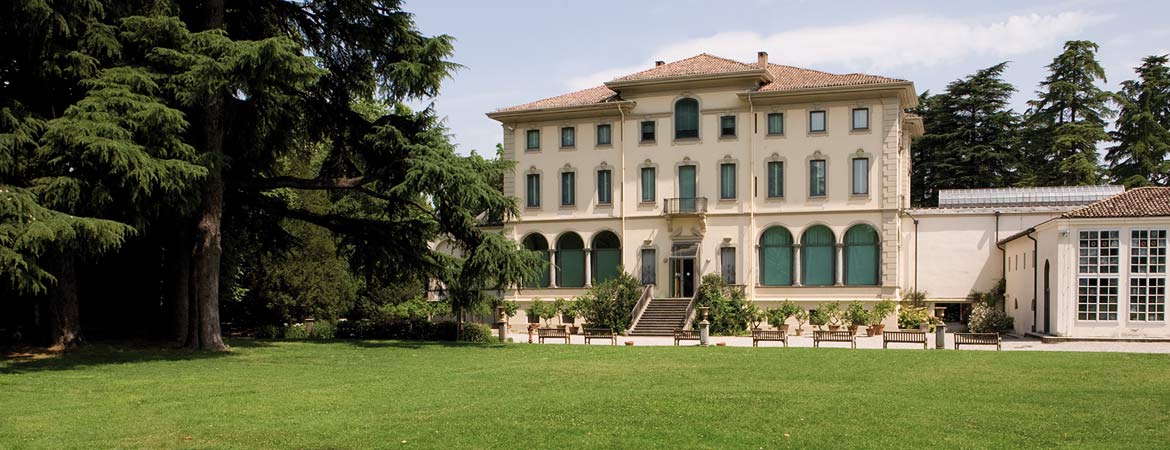The Romantic Park
The magnificent, centuries old park, populated by animals, makes the visit at the Foundation particularly pleasant, thanks also to the great cultural interest of the Villa of Masterpieces.
The Romantic Park, wide twelve hectares, follows the English garden style, characterized by an irregular arrangement of plants, often interspersed with broad grass fields. The presence of trees, historical solitary trees and shrubs, frequently spontaneous, lends to the parks an aesthetic betterment, thanks also to the variety of shapes, which reflects not only English landscape park’s harmony, but also the wild nature’s fascination. Additional elements of landscape variety are the two Italian garden areas, with low box hedges.

Behind the Villa, in the direction of the level, the wide expanse of grass field is delimited by a row of six Ionic columns of marble, coming from a 18th century old church and courtyard of South Italy, destroyed during the Second World War. The present arrangement of the park has been set up almost completely at the beginning of 19th century; a grotto and a small lake, both artificial, lent to the park an appearance rather different than the actual one. It is still possible to see part of the reservoir. In the park are present around forty arboreal and shrubby species, most of which tall trees; exotic species prevail, here introduced for their ornamental value. Very important the presence of some monumental arboreal exemplar, like Cedrus atlantica, Cedrus libani, Sequoia sempervirens, Quercus robur, Platanus hybrida.
List of the arboreal and shrubby species present along the paths (elencate per: Famiglia – Genere – Specie) Salicaceae, Populus, nigra (var. italica). Aquifoliaceae, Ilex, aquifolium. Taxaceae, Taxus, baccata. Pinaceae, Cedrus, deodara. Hippocastanaceae, Aesculus, hippocastanum. Buxaceae, Buxus, sempervirens. Taxodiaceae, Sequoia, sempervirens. Taxodiaceae, Cryptomeria, japonica. Pinaceae, Cedrus, atlantica (var. glauca). Ulmaceae, Celtis, australis. Corylaceae, Corylus, avellana. Cornaceae, Cornus, sanguinea. Leguminosae, Cercis, siliquastrum. Ginkgoaceae, Ginkgo, biloba. Rosaceae, Prunus, cerasifera (var. pissardii). Betulaceae, Carpinus, betulus. Rosaceae, Crataegus, monogyna. Ulmaceae, Ulmus, laevis. Ulmaceae, Ulmus, minor. Juglandaceae, Juglans, nigra. Magnoliaceae, Magnolia, grandiflora. Aceraceae, Acer, pseudoplatanus. Berberidaceae, Mahonia, aquifolium. Oleaceae, Fraxinus, excelsior. Oleaceae, Fraxinus, ornus. Leguminosae, Gleditsia, triacanthos. Oleaceae, Osmanthus, heterophyllus. Magnoliaceae, Magnolia, soulangiana. Caprifoliaceae, Sambucus, nigra. Platanaceae, Platanus, hybrida. Rosaceae, Prunus, serrulata (var. kanzan). Celastraceae, Euonymus, japonicus. Pinaceae, Pinus, sylvestris. Bignoniaceae, Catalpa, bignonioides. Pinaceae, Picea, abies.
